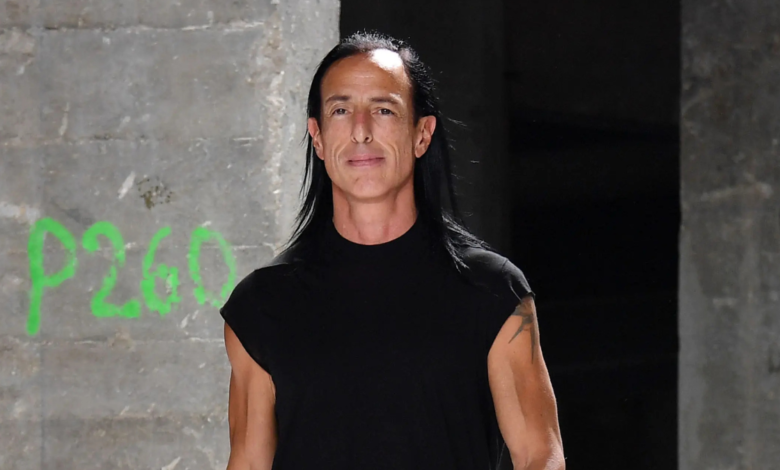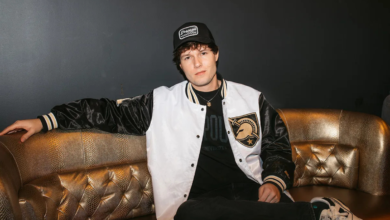Rick Owens Mission Statement: A Deep Dive into the Philosophy of a Fashion Maverick

Introduction: The Enigma of Rick Owens
Rick Owens Mission Statement is not just a name; it’s a statement. A designer who has redefined the boundaries of fashion, Owens has carved out a niche that is as unconventional as it is influential. His mission statement, though not explicitly written in a corporate document, is woven into the fabric of his brand. It’s a philosophy that challenges norms, embraces contradictions, and celebrates individuality. This article delves into the essence of Rick Owens’ mission statement, exploring how his vision has shaped his brand and the fashion industry at large.
Owens’ approach to fashion is deeply personal, reflecting his journey and values. He doesn’t just create clothes; he creates an ethos. His mission is to provoke thought, to challenge the status quo, and to offer an alternative to the mainstream. This is evident in everything from his minimalist yet dramatic designs to his unapologetic embrace of the unconventional. For Owens, fashion is not just about aesthetics; it’s about identity, rebellion, and self-expression.
The Core of Rick Owens’ Mission: Rebellion Meets Elegance
At the heart of Rick Owens Mission Statement is the idea of rebellion. But this isn’t rebellion for the sake of being different. It’s a deliberate, thoughtful rejection of the ordinary. Owens’ designs often feature stark contrasts—hard versus soft, dark versus light, structured versus fluid. These contrasts are not just visual; they are philosophical. They represent the tension between conformity and individuality, between tradition and innovation.
Owens’ rebellion is also deeply rooted in elegance. His designs, while avant-garde, are never chaotic. There’s a meticulousness to his work that speaks to a respect for craftsmanship and tradition. This balance between rebellion and elegance is what sets Owens apart. It’s a mission to redefine what luxury means, to strip it of its pretensions and infuse it with authenticity.
Sustainability and Ethical Fashion: A Quiet Revolution
While Rick Owens Mission Statement is often celebrated for his bold designs, his mission statement also includes a quieter, yet equally important, commitment to sustainability and ethical fashion. In an industry often criticized for its environmental impact, Owens has taken steps to minimize his brand’s footprint. This includes using sustainable materials, reducing waste, and ensuring fair labor practices.
Owens’ approach to sustainability is not about grand gestures or marketing campaigns. It’s about integrating ethical practices into the DNA of his brand. This reflects a broader mission to create fashion that is not only beautiful but also responsible. It’s a reminder that true luxury is not just about aesthetics; it’s about integrity.
The Role of Individuality in Rick Owens’ Vision
One of the most striking aspects of Rick Owens mission statement is his emphasis on individuality. Owens’ designs are not meant to fit into a mold; they are meant to break it. His clothes are a celebration of the unique, the unconventional, and the unexpected. This is evident in his use of unconventional materials, his bold silhouettes, and his willingness to challenge traditional notions of beauty.
For Owens, individuality is not just a design principle; it’s a way of life. His mission is to empower people to embrace their true selves, reject societal pressures, and find beauty in their uniqueness. This is perhaps why his brand has such a devoted following. It’s not just about the clothes; it’s about the message they convey.
The Influence of Architecture and Art on Owens’ Mission
Rick Owens mission statement is deeply influenced by his love of architecture and art. His designs often feature clean lines, geometric shapes, and a sense of structure that is reminiscent of modernist architecture. This is not a coincidence. Owens has often spoken about how architecture inspires him, particularly the work of architects like Le Corbusier and Tadao Ando.
Art also plays a significant role in Owens’ vision. His collections often reference art movements, from surrealism to minimalism. This fusion of fashion, architecture, and art is a key part of his mission. It’s about creating something that is not just wearable but also meaningful. Owens’ designs are not just clothes; they are pieces of art that challenge and inspire.
The Global Impact of Rick Rick Owens Mission
Rick Owens mission statement has had a profound impact on the global fashion industry. His willingness to challenge norms and embrace the unconventional has inspired a new generation of designers. His influence can be seen in the rise of avant-garde fashion, the growing emphasis on individuality, and the increasing importance of sustainability in the industry.
But Owens’ impact goes beyond fashion. His mission to celebrate individuality and reject conformity resonates with people from all walks of life. It’s a reminder that true beauty lies in being true to oneself. This universal message is what makes Owens’ brand so powerful. It’s not just about fashion; it’s about a way of life.
Conclusion: The Enduring Legacy of Rick Owens Mission
Rick Owens mission statement is a testament to the power of individuality, rebellion, and authenticity. It’s a philosophy that has not only shaped his brand but also left an indelible mark on the fashion industry. Owens’ commitment to challenging norms, embracing contradictions, and celebrating uniqueness is a reminder that fashion is not just about clothes; it’s about identity, expression, and meaning.
As we look to the future, it’s clear that Rick Owens Mission Statement will continue to inspire. In a world that often values conformity over individuality, Owens’ vision is a beacon of hope. It’s a call to embrace our true selves, to reject the ordinary, and to find beauty in the unexpected. And that, perhaps, is the true essence of Rick Owens mission statement.





